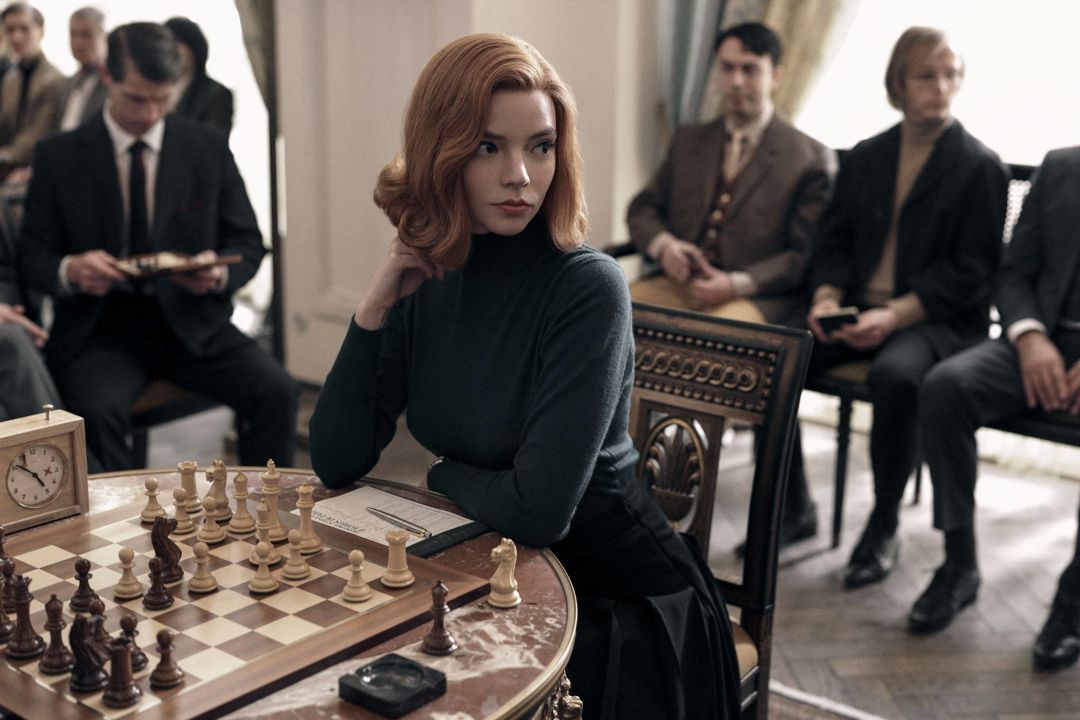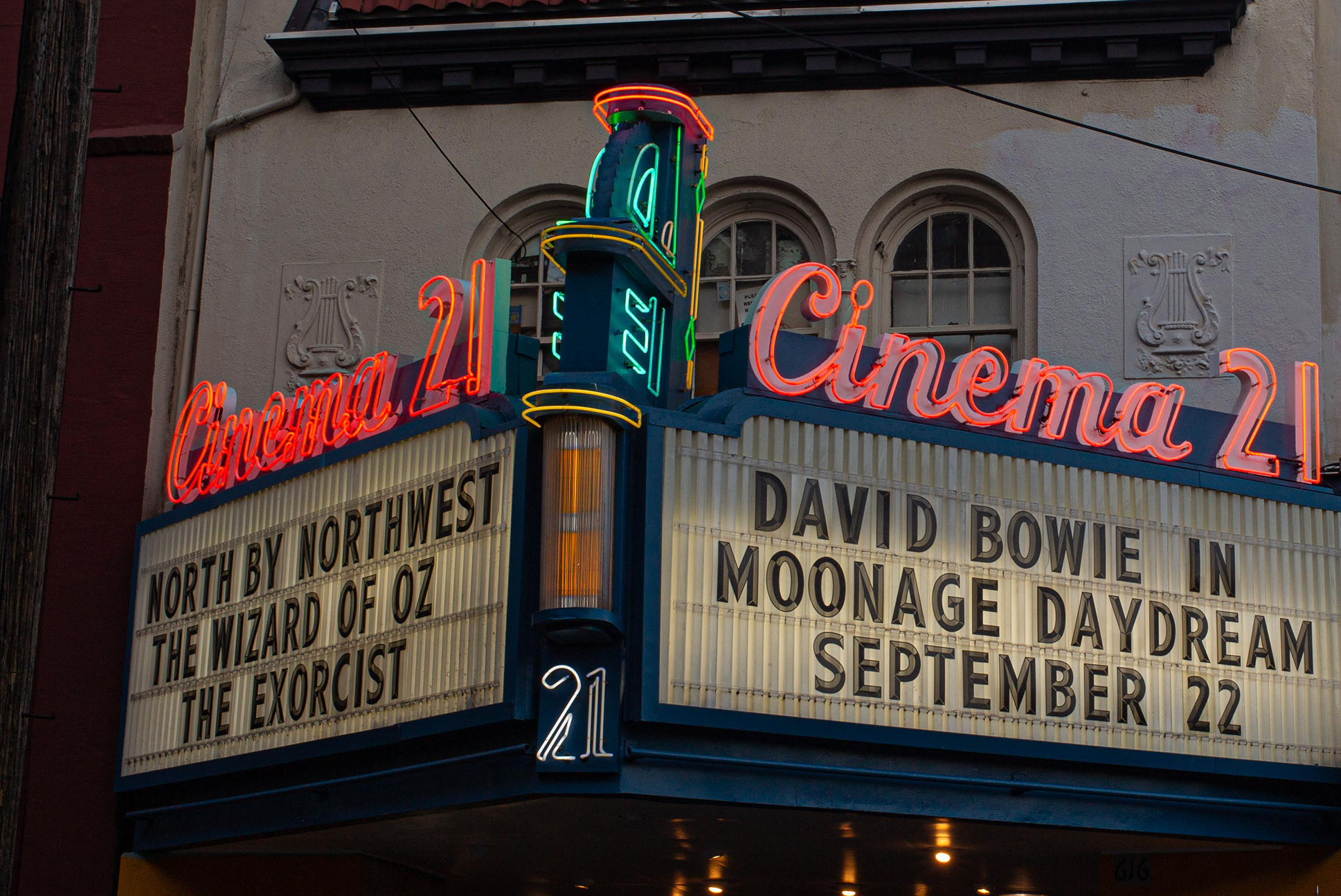Pop Culture Worth Your Time: The Queen's Gambit, Hades, and More

Anya Taylor-Joy in The Queen's Gambit
Image: Charlie Gray/Netflix
2020 is almost over, but the pandemic is not. For at least the next couple months, we're going to be hunkered down inside, waiting out the short days ’til spring shows up and sets us free. One key to survival? A killer content queue. Here’s the stuff we're obsessed with at Portland Monthly this week, from chess prodigies to civil war ghosts and beyond.
Anything But Christmas on the Square
Why did Christmas on the Square, the Dolly Parton–Christine Baranski–Debbie Allen holiday film that premiered last month on Netflix, pop up on any recommended list? I could understand, perhaps, it being nominated as something to enjoy in an altered state, or with a particular strain from your corner dispensary, like 2019’s Cats. But, no, it appeared on lists with titles like “What to Watch This Weekend” and “15 Holiday Movies Feminists Should Watch This Winter.” I don’t think these list compilers actually watched it.
Now, I will be the first to tell you Parton is a genius, a saint, a vaccine funder, a beautiful human with Baby Yoda levels of universal appeal. Stage and screen legend Baranski secured her place in my heart as the enthusiastic summer camp director in Addams Family Values. Allen, of Fame fame, is television royalty. But none of them are in the “can do no wrong” category, and they have done us wrong with this stagy, wannabe-campy, aggressively Christian mess.
Baranski is a Scrooge/Mr. Potter/Cruella de Vil figure with daddy issues, regrets, and a secret—and a plan to, on Christmas Eve, sell off an entire Kansas town that appears to have no zoning or land use regulations. Parton is an angel who wants to change her heart. Treat Williams, who pulled off the hot dad role on Everwood in the early 2000s but has now passed his Brian Keith years and turned into a cross between a Punky Brewster–era George Gaines and former Portland mayor Tom Potter, is the old flame who sings songs about memories is his sparse antique store. The townspeople are a heartwarming rainbow of humanity. There’s a child bartender. (Note to self: look up Kansas booze laws.)
There are a lot of Broadway performers getting work, which I guess is the project’s one positive. As a hate-watch, it is perhaps more tolerable than The Christmas Chronicles 2, which hides the stunt casting that made the first one charmingly passable behind a grisly amount of CGI. —Margaret Seiler, managing editor
Bloody Nose, Empty Pockets
As a certified stan of tricky documentaries—I have, at this point, commanded a small village of defenseless acquaintances to watch Sarah Polley's Stories We Tell—I am the primary audience for Bloody Nose, Empty Pockets. A Sundance darling from brothers Bill and Turner Ross, Bloody Nose shows us the final day at a bar called the Roaring 20s in Las Vegas at the dawn of the Trump era. Barflies show up and mingle from morning to night, airing private grievances and making tender connections and falling on their asses at a place they've made their second home (for better or worse). There's just one catch: the Roaring 20s is in New Orleans, still open, and the "regulars" were auditioned and preselected by the filmmakers (few of them are actors). The whole thing is, to an extent, a fake.
For its full 98 minute runtime, Bloody Nose never tips its hand. You wouldn't know for absolute certain that the setup is artificial unless you read about it independently (though there are definitely clues). What you would know, though, is that the Ross Brothers have an incredible eye for the sad intimacy of a night out, and that they've crafted a staggeringly human statement about loneliness and 21st century life from an impossibly small box of materials. For me, the conceit makes the film even more genius, turning it into a testament to the simultaneous falseness and authenticity of Vegas, of the barstool conversation, of America writ large.
However you choose to take its trickery, though, you're likely to yearn—for the touch and timbre of strangers, for impromptu singalongs, for the unexpected bursts of excitement or moments of tenderness that used to come from moving through the world. Bloody Nose, Empty Pockets is sad—it mostly shows us lives that have been ruined or are headed that way—but it is also profoundly cathartic, and easily one of the best things I've seen all year. Seek it out from Movie Madness, various virtual cinemas, or digital streaming platforms. —Conner Reed, arts and culture editor




